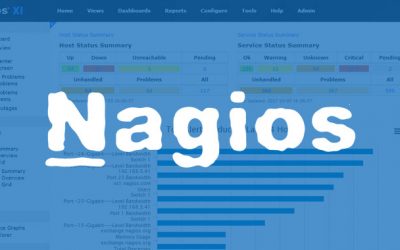I just came to the realization that I've been working with Network Appliance filers for over a decade now. They're great -- rock solid stability, an ever expanding feature set, excellent tech support, and they're certified against many enterprise applications...
Infrastructure
OKR and Agile: Harmonizing Strategic Goals with Agile Methodologies
Objectives and Key Results (OKRs) and Agile methodologies like Scrum, Kanban, and SAFe are powerful frameworks designed to boost productivity and keep teams aligned. OKRs drive strategic goal-setting and measurable outcomes, while Agile approaches like Scrum focus on...
Beyond Timelines and Budgets: How Strategic Project Management Accelerates Market Readiness
Meeting deadlines and staying within a budget are important to business success, but continuous achievement requires more than these two factors. Modern organizations understand that a strategic project manager (PM) is vital to project success. A PM’s role extends...
Maximizing Efficiency with a RACI Matrix
For years, I’ve enjoyed working with clients on difficult projects. In my early career, I did a lot of work for a cloud and infrastructure company where I mainly worked with internal teams. However, when I did get the chance to work with external clients, I found...
Avoiding Common Goal-Setting Pitfalls with Best OKR Practices for 2025
Goal-setting is vital to business success, but it is not without its challenges. Objectives and Key Results (OKRs) are a popular framework for aligning teams and driving results. Despite knowing about OKR practices, companies still commonly fall into traps that derail...
Reduce Technical Debt and Streamline Your Jira Backlog with Atlassian Compass
Have you ever found your team sacrificing long-term stability for short-term speed? This is unfortunately a common practice as businesses try to keep up with new technologies and emerging competitors. This practice leads to “technical debt” otherwise known as the...
Understanding Recovery Point Objective (RPO) and Recovery Time Objective (RTO): A Guide to Effective Disaster Recovery Planning
Businesses are becoming more reliant on technology than ever before, meaning that disruptions such as system failures, data breaches, or natural disasters are more impactful to operations. Additionally, these can lead to a loss of revenue and customer trust. Disaster...
The Pitfalls of Outdated Tools in Managing Global Teams
The dynamics of product development have shifted dramatically in the past 5 years. Teams are no longer confined to a single location or even a single time zone. Instead, they span continents, collaborating across borders to bring products to market faster than ever...
Engineering, Manufacturing, Service and Sustainability Glossary of Terms
When working in the engineering and manufacturing fields, it is common to encounter unfamiliar terms. In this glossary, we define important terms that describe processes and components in the engineering, manufacturing, service, and sustainability industries. General...
What is Observability And How Can It Optimize IT?
Your IT architecture is anything but simple. In fact, it’s more like the complex, yet silent spinal cord of your business functions. But what can you do when something goes wrong? Monitoring tools give you a partial view into business performance (or issues),...
Using Jira Advanced Roadmaps for Program Management
Here is the VLOG transcript for Carlos Almeida, Vice President of Engineering, SPK and Associates discussing Jira Advanced Roadmaps. For the best experience, we recommend watching the video so you can follow along with any instructions. Introduction Today we're going...
2022 Technology Year in Review
In the past 3 years, our world has definitely changed. This year was no exception. From the early days of the COVID-19 pandemic to the great resignation, businesses have had to adapt to changing government regulations, employee needs, and methods of doing business. ...













